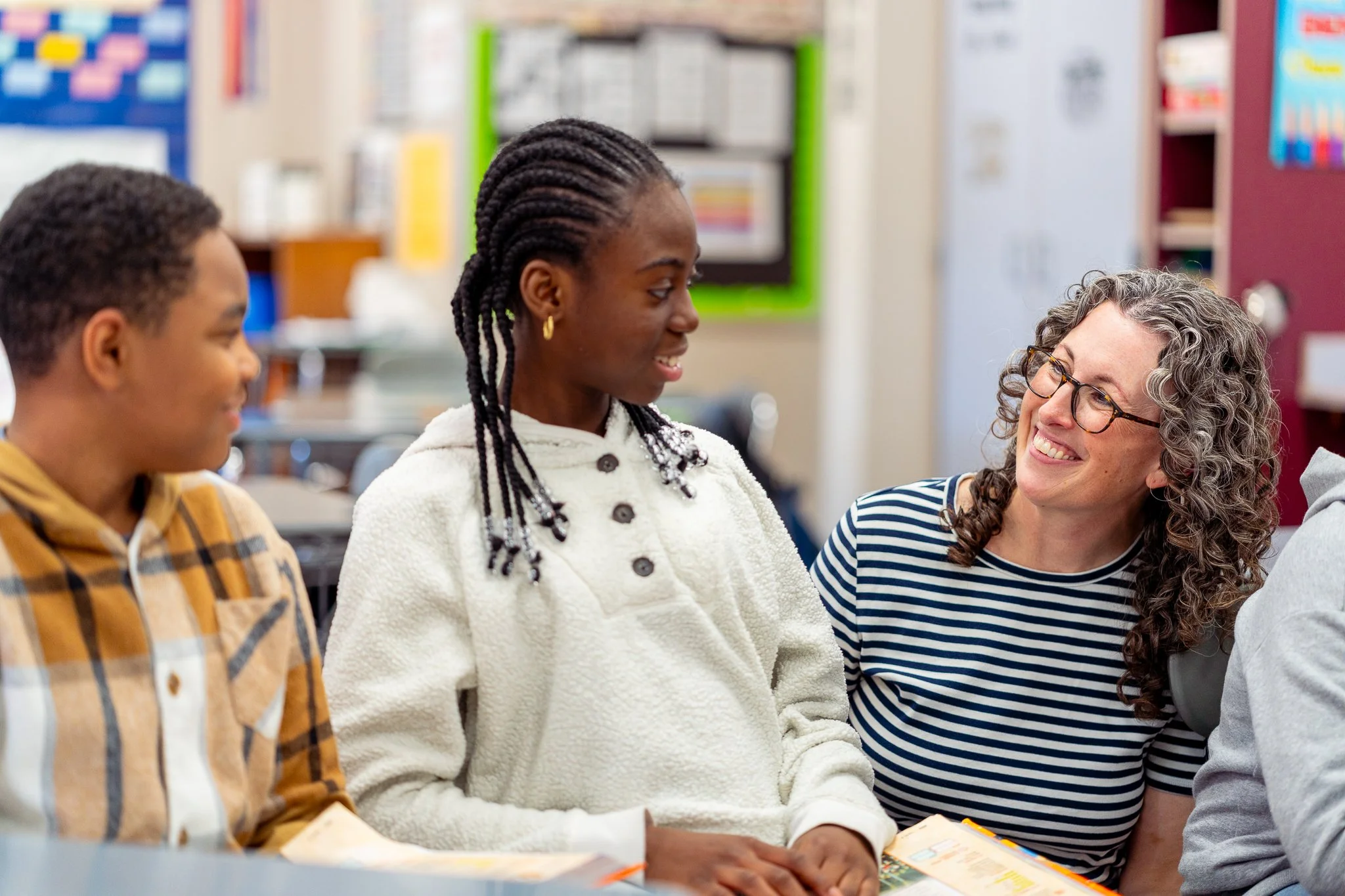Kids’ Voices Matter: 4 Powerful Reasons to Teach Academic Conversations in the Classroom
May 27, 2025
As I visit classrooms around the country, teachers share that the breadth of material covered in each lesson by some of the new reading programs often dictates that they do most of the talking, with little time left over for student discussion and conversation. Yet research shows that important components of explicit instruction include students being actively engaged and teachers being able to check for understanding; student talk is therefore critical in every lesson.
I would argue that we also need to regularly teach speaking and listening skills. Making time for conversation lessons is one way to make this possible. Teaching a conversation lesson as a follow-up to a read-aloud, close-reading, guided inquiry, or focus lesson can help further and cement student learning. Students can engage in whole-class, small-group, and partner conversations. You can use each type of conversation lesson strategically to teach different skills and strategies, support knowledge-and vocabulary-building, boost student confidence, encourage multilingual learners to practice language skills, and more. Finally, conversation lessons offer all students opportunities to share their unique thoughts and to learn that all students’ voices matter.
Speaking and listening skills are critical literacy skills to teach
Effective oral communication is critical not only in school but throughout life. The ability to engage in interesting and meaningful discussions is a skill that most kids need to be taught explicitly and practice frequently. Students should learn how to present their ideas respectfully, support them with textual evidence, and anticipate opposing viewpoints. Additionally, they need to learn to develop the ability to listen attentively, consider their classmates’ perspectives, and remain open to changing their opinions. Practicing conversation skills—such as asking questions, building on a classmate’s idea, and providing relevant examples—helps students learn how to keep discussions flowing. During conversation lessons, I keep in mind a skill progression for speaking and listening skills and intentionally provide students with strategies to improve their discourse.
IRL interactions matter for social and emotional development
Kids are naturally social and eager to share their thoughts and ideas with their peers. I think conversation lessons are particularly important in a world where many students interact with their peers primarily through devices. It’s a great way to show them how fun, informative, and thought-provoking conversations can be when they have the skills to engage in robust dialogue. Additionally, conversation lessons are highly engaging and bring life and excitement to the classroom. They can be a great way to re-energize students at a time of the day when you have found their engagement typically flags. And hopefully students will both learn the benefit of in-person interactions and transfer their learning to their online communications.
Student-Led Discussions Boost Reading Comprehension
There’s evidence that conversation lessons support reading comprehension (Cazden, 2005; Wilkinson et al., 2015), develop cognitive skills (de Sousa, 2017), and develops language and vocabulary (Zwiers & Crawford, 2009). Every student brings different perspectives, experiences, and life learning to every text they read. As they share their ideas and thoughts, students learn from their classmates’ perspectives and deepen their understanding of the text. They discover that there may be multiple, and equally legitimate, ways to interpret information, that different information resonates with and touches readers in unique ways, and that every reader takes something from every text. Furthermore, conversation lessons are a great way to have students extend their vocabulary learning from the text. At the beginning of the lesson, you might remind students of key words they learned and encourage them to use this new vocabulary as they discuss the text. Alternately, you can ask questions or rephrase student statements using more nuanced vocabulary, which helps students build their mental word bank.
Use discussion to improve writing skills
Many of the skills students use in a conversation lesson mirror skills they need to write effectively. As students discuss a text, they may summarize a text, identify key ideas, present their viewpoint, try to persuade classmates, use textual evidence to back up their reasoning, hear counter arguments, and/or change their thinking—all skills they need to write an effective essay, argument, or informational piece. When they converse about fictional texts, they explore character development, the use of descriptive language, plot devices, the role setting plays, etc.—again, all learning that will enrich their own stories.
If you are not currently using conversation lessons as a regular component of your lesson repertoire, I encourage you to work in one lesson a week. If you are teaching conversation lessons, I challenge you to be more strategic in your planning and with the support you provide throughout lessons. I’d love to hear about how you use conversation in your classroom, any challenges you’ve encountered, and any success stories you would like to share.
For more information about conversation lessons, see Teaching Reading Across the Day. For use-right-away strategies to support speaking and listening skills, as well as comprehension skills, check out The Reading Strategies Book 2.0.

